In This Week’s Star
- NASA Targets Sept. 3 for Next Artemis I Moon Mission Launch Attempt
- Marshall Team Members Staff SLS Exhibit at Kennedy Space Center
- Team Members Gather for Artemis I Launch Attempt
- Marshall Leads Mentor-Protégé Agreement Between CH2M Hill, KS Ware & Associates
- DART Team Confirms Orbit of Targeted Asteroid
- Webb’s Jupiter Images Highlighted on ‘This Week at NASA’
NASA Targets Sept. 3 for Next Artemis I Moon Mission Launch Attempt
NASA will target Saturday, Sept. 3 at 1:17 p.m. CDT, the beginning of a two-hour window, for the launch of Artemis I, the first integrated test of NASA’s Orion spacecraft, Space Launch System (SLS) rocket, and the ground systems at the agency’s Kennedy Space Center.
Mission managers met Aug. 30 to discuss data and develop a forward plan to address issues that arose during an Aug. 29 launch attempt for the flight test. During that launch attempt, teams were not able to chill down the four RS-25 engines to approximately minus 420 degrees F, with engine 3 showing higher temperatures than the other engines. Teams also saw a hydrogen leak on a component of the tail service mast umbilical quick disconnect, called the purge can, and managed the leak by manually adjusting propellant flow rates.
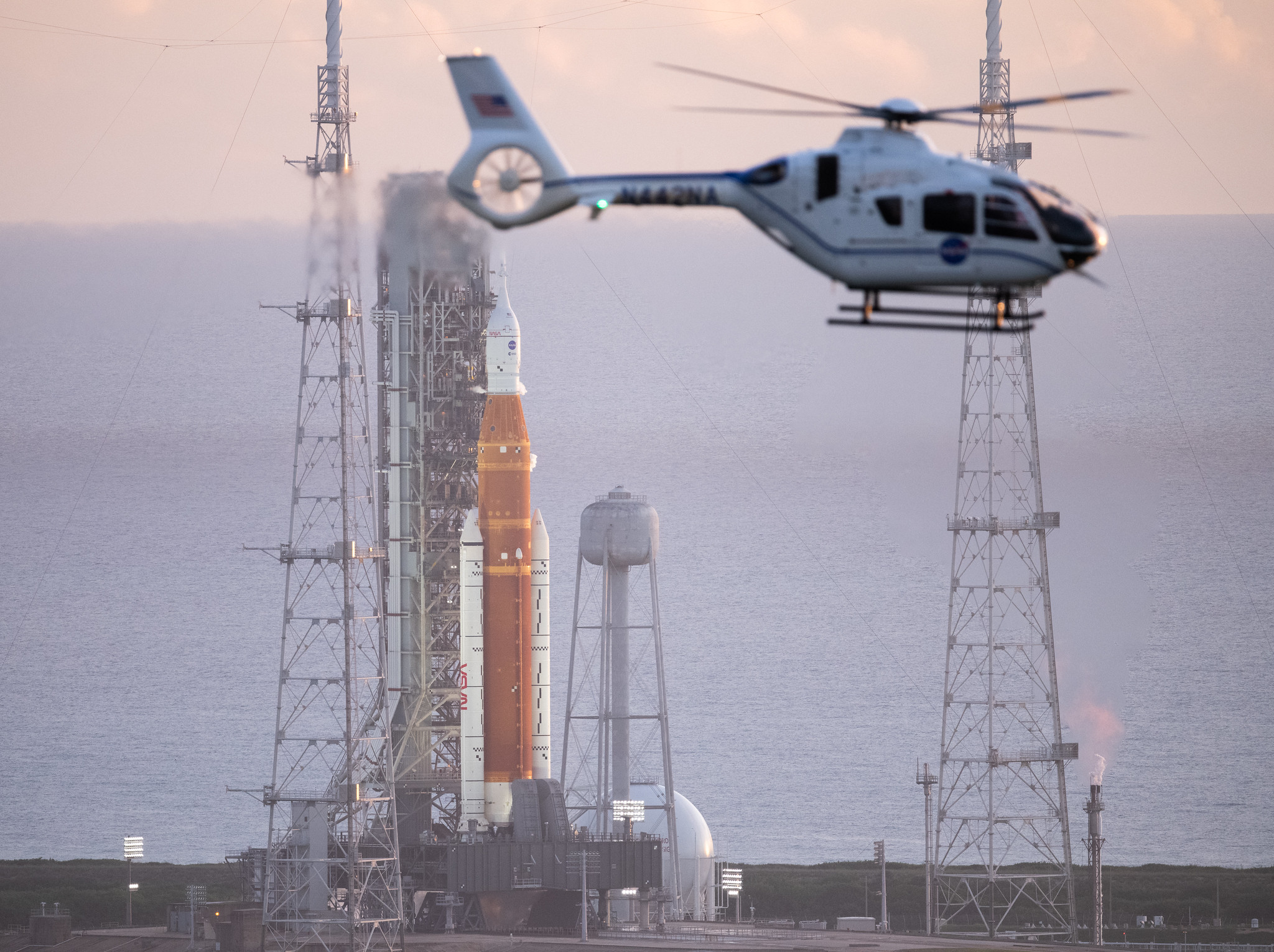
In the coming days, teams will modify and practice propellant loading procedures to follow a procedure similar to what was successfully performed during the Green Run at NASA’s Stennis Space Center. The updated procedures would perform the chilldown test of the engines, also called the kick start bleed test, about 30 to 45 minutes earlier in the countdown during the liquid hydrogen fast fill liquid phase for the core stage.
Teams also are configuring platforms at Launch Pad 39B to enable engineers access to the purge can on the tail service mast umbilical. Once access is established, technicians will perform assessments and torque connection points where necessary.
Meteorologists with the U.S. Space Force Space Launch Delta 45 predict favorable weather conditions for Sept. 3. While rain showers are expected, they are predicted to be sporadic during the launch window.
The mission management team will reconvene Sept. 1 to review data and overall readiness.
Marshall Team Members Staff SLS Exhibit at Kennedy Space Center
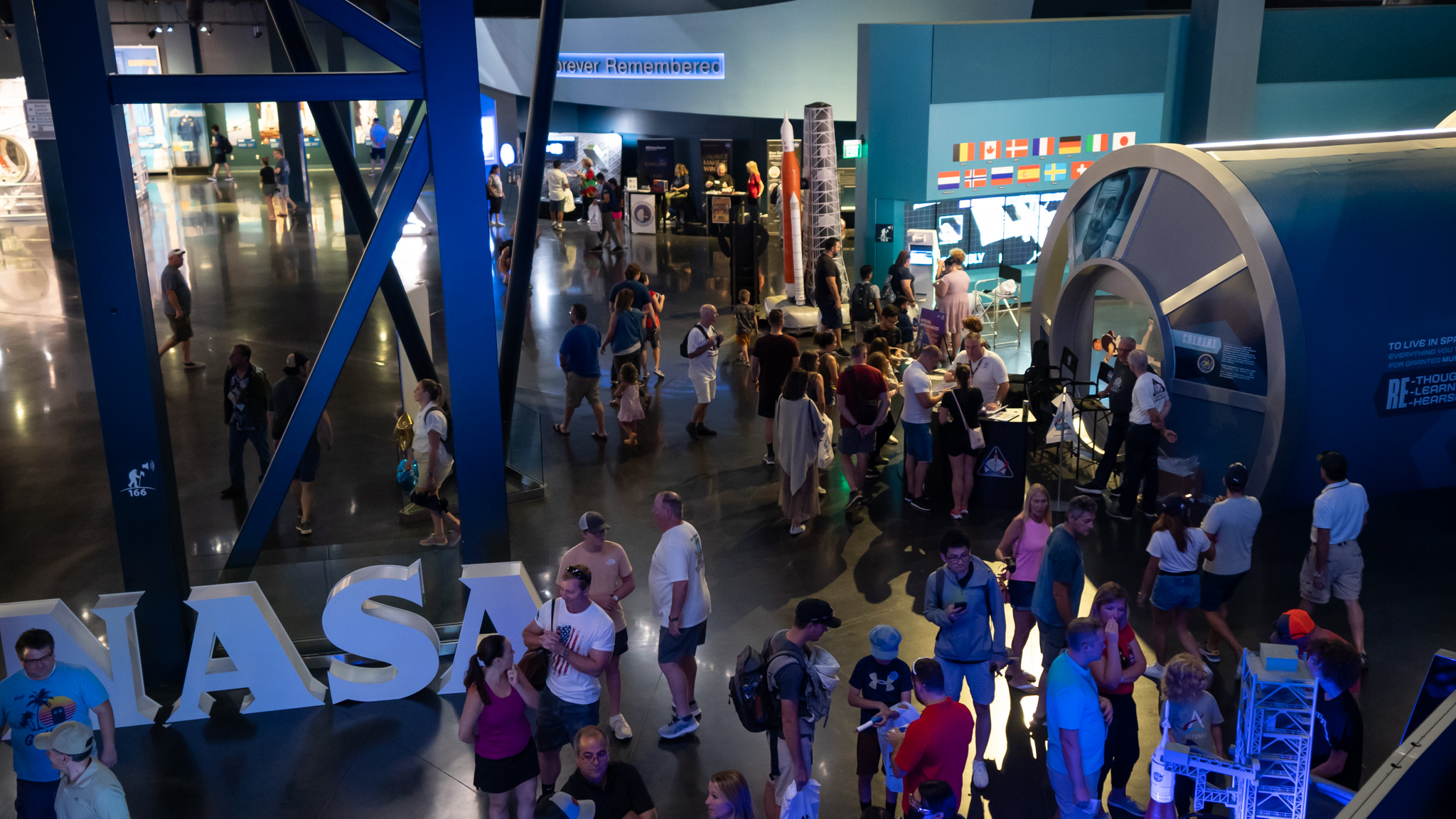
Guests visit the NASA Artemis exhibit at the Kennedy Space Center Visitor Complex in Cape Canaveral, Florida. Marshall team members helped staff the exhibit in the days leading up to and during the Artemis I launch window, showcasing models and providing information about the spacecraft and its mission. Several of the exhibit pieces – to include a model of the SLS rocket atop the mobile launcher – were created at the Marshall Model Shop. (Credits: NASA)
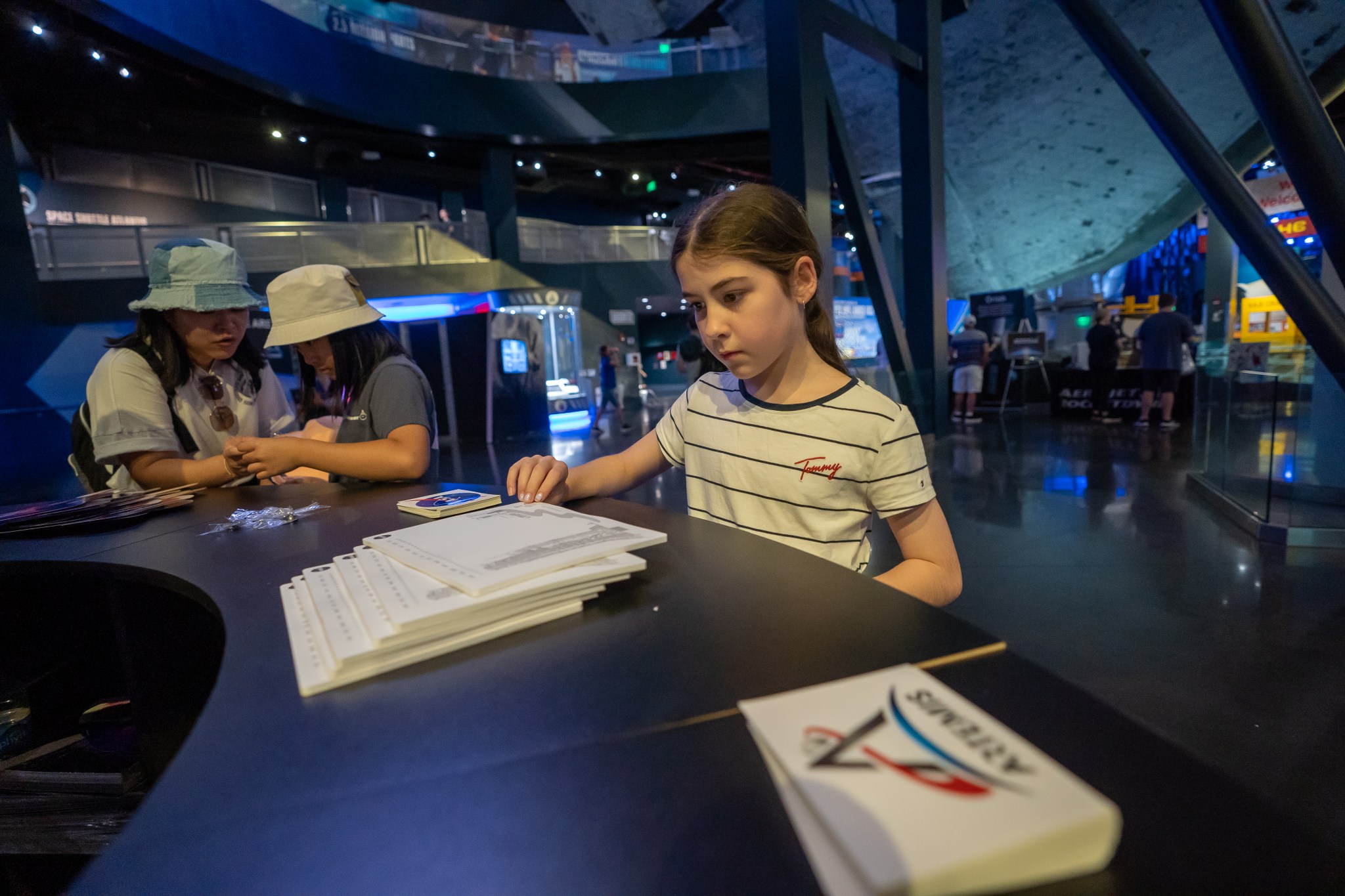
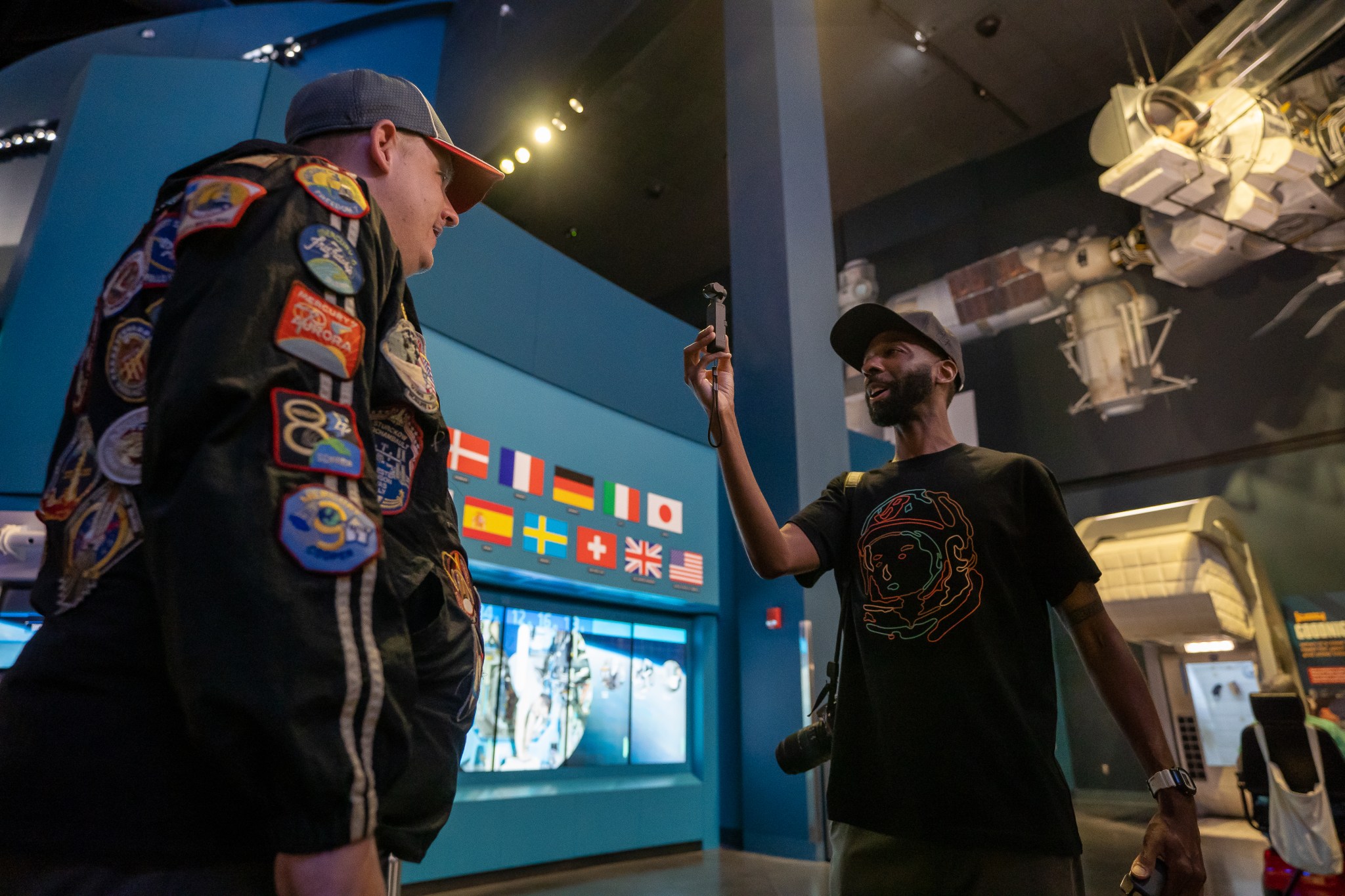
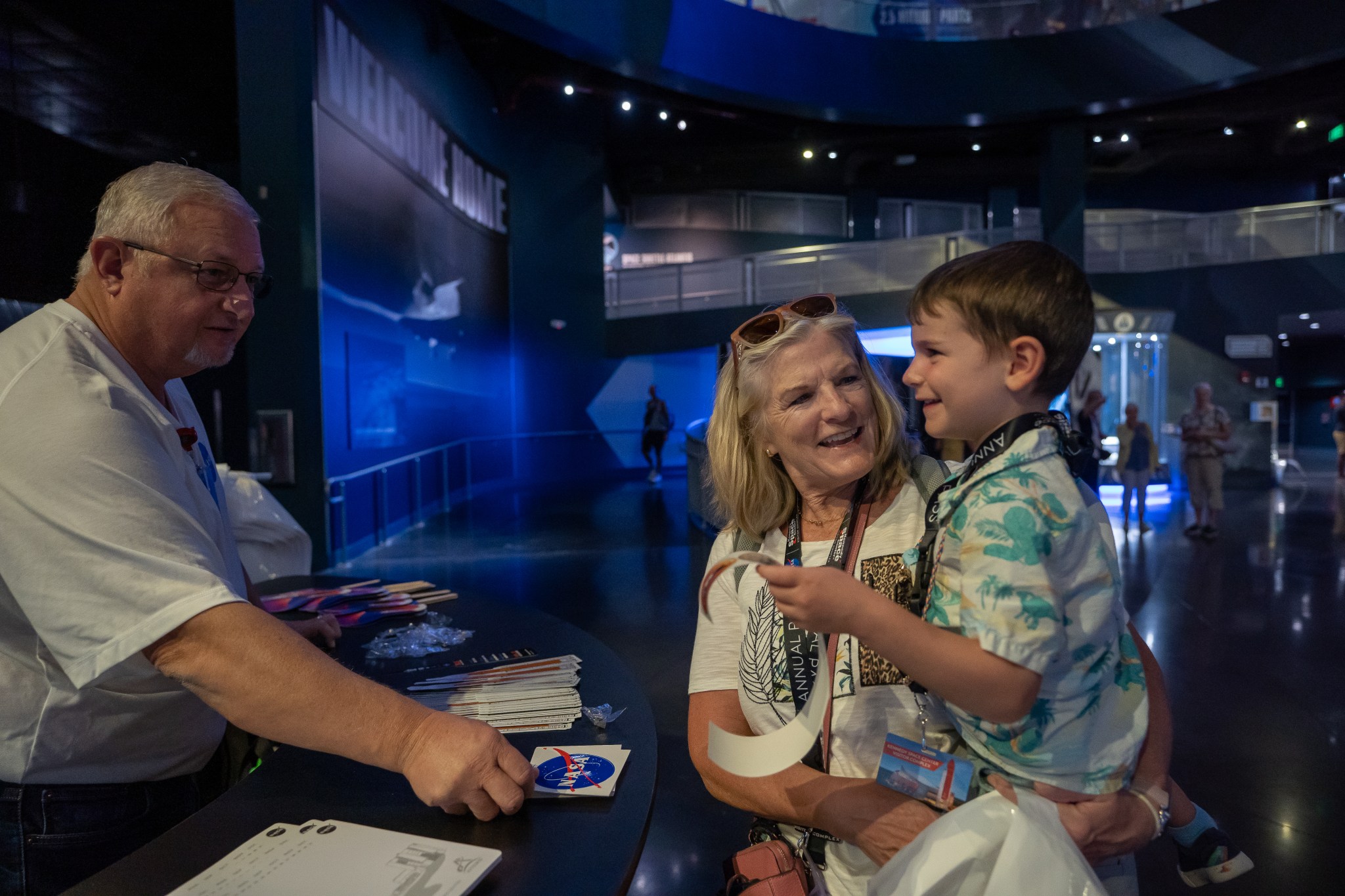
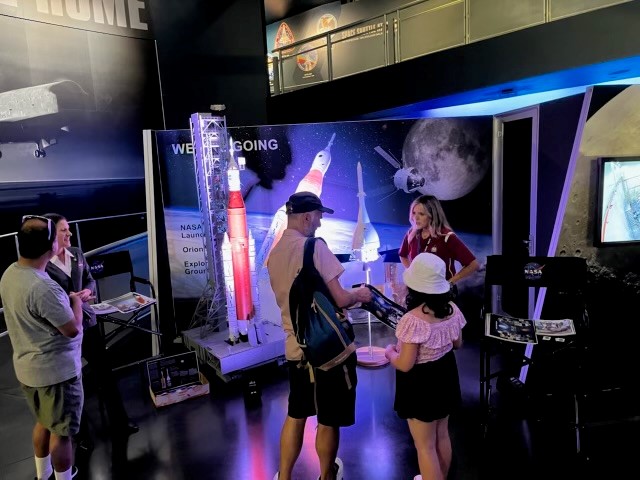
Team Members Gather for Artemis I Launch Attempt
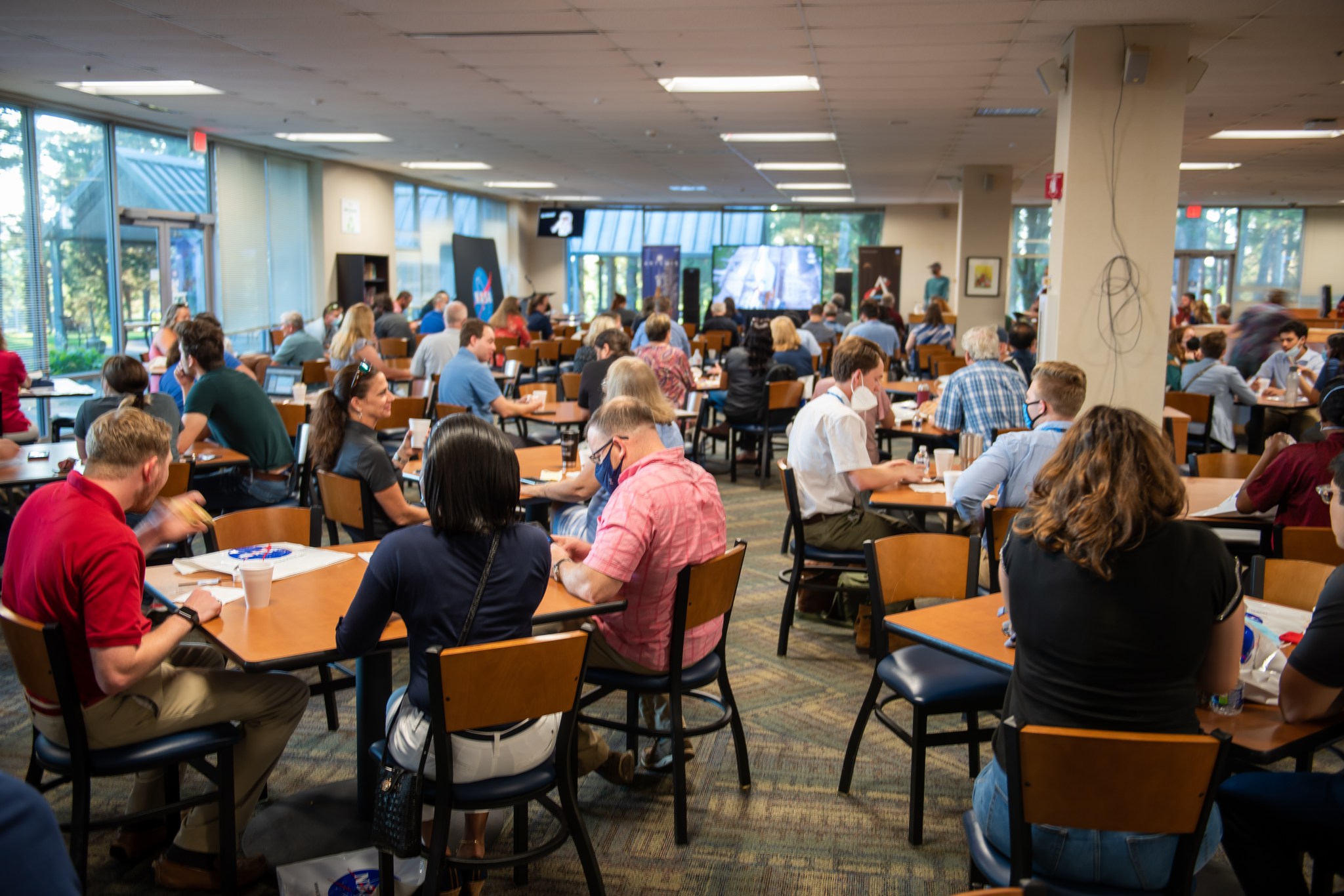
Team members at NASA’s Marshall Space Flight Center gather Aug. 29 for an Artemis I launch watch party in the 4203 cafeteria. Following the scrub of the Aug. 29 attempt, NASA set a two-hour launch window for Sept. 3 beginning at 1:17 p.m. CDT. The Artemis I flight test is the first integrated test of the agency’s deep space exploration systems: the Orion spacecraft, SLS rocket, and supporting ground systems. (NASA/Alex Russell)
Marshall Leads Mentor-Protégé Agreement Between CH2M Hill, KS Ware & Associates
Leaders from NASA’s Marshall Space Flight Center prime contractor CH2M Hill Inc. and KS Ware & Associates LLC, a small, woman-owned business based in Nashville, Tennessee, signed a NASA Mentor-Protégé Agreement on Aug. 9. This partnership will foster invaluable connections between the two companies and will further the capabilities of KS Ware & Associates and NASA.
The signing ceremony was held virtually and included multiple managers from Marshall, which has led the Mentor-Protégé Program since 2019.
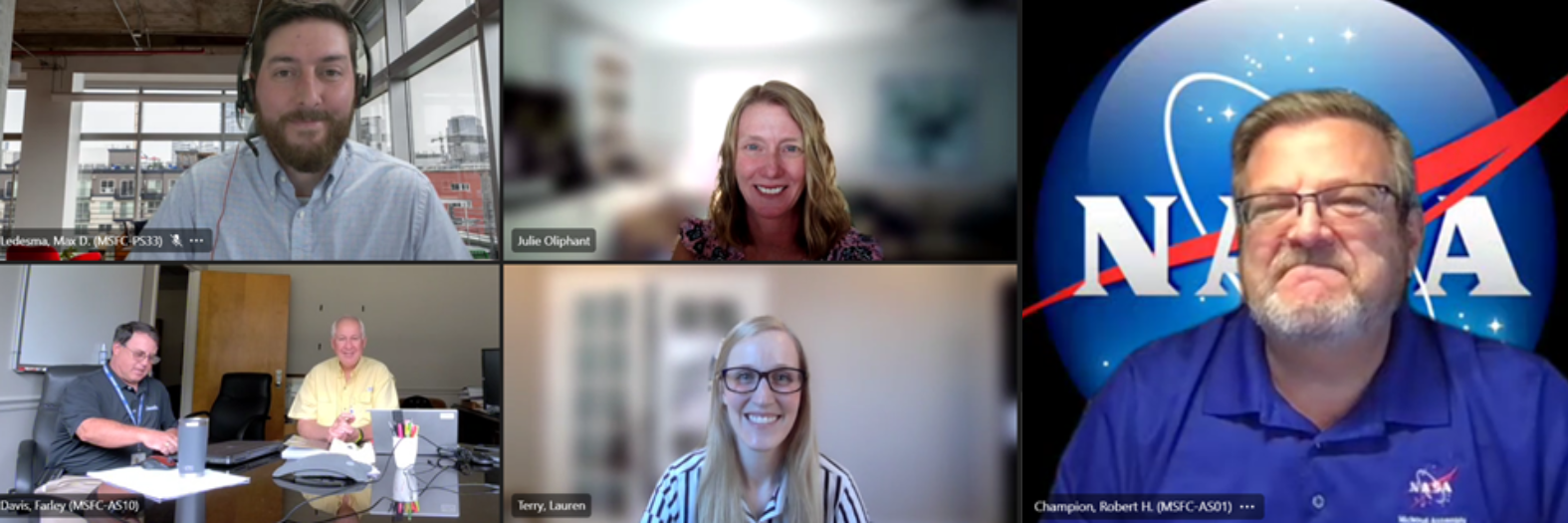
“Anytime we get the opportunity to bring small businesses along, get them vetted, and brought up to speed so that they can have a better opportunity to compete for and win government contracts, it’s a good day for NASA,” said Robert Champion, director of the Office of Center Operations at Marshall.
The Mentor-Protégé Agreement between CH2M Hill and KS Ware & Associates lasts for three years and focuses on architect-engineer services for environmental and occupational health at Marshall. In 2017, KS Ware & Associates was awarded a contract to perform environmental services, such as groundwater monitoring and contamination remediation at Marshall and NASA’s Michoud Assembly Facility. CH2M Hill will counsel KS Ware & Associates in technical and business development by hosting workshops, facilitating introductions to additional potential clients, assessing the company’s implementation of CH2M processes, and other actions to aid KS Ware & Associates in delivering excellent services for NASA and other customers.
NASA’s Office of Small Business Programs strives to integrate small businesses into the base of contractors and subcontractors that support NASA missions. The Mentor-Protégé Program, which started in 2008, facilitates agreements between some of NASA’s largest contractors and eligible small business and academic institutions. Mentor and small businesses that enter a Mentor-Protégé Program must meet certain requirements, which are outlined on the Office of Small Business Programs website.
All parties involved in a Mentor-Protégé Agreement benefit – for example, NASA fosters a more diverse workforce, mentors develop a base of qualified subcontractors, and protégés receive valuable tools to enhance their business.
“Beyond us being a woman-owned small business, I believe this is a great way to encourage other females to pursue careers in the STEM industry,” said Julie Oliphant, president of KS Ware & Associates.
Since 2008, there have been approximately 49 agreements across NASA’s 10 field centers nationwide, 19 of which Marshall led.
Learn more about the program and NASA’s Office of Small Business Program here:
DART Team Confirms Orbit of Targeted Asteroid
Using some of the world’s most powerful telescopes, the Double Asteroid Redirection Test (DART) investigation team last month completed a six-night observation campaign to confirm earlier calculations of the orbit of Dimorphos – DART’s asteroid target – around its larger parent asteroid, Didymos, confirming where the asteroid is expected to be located at the time of impact.
NASA’s DART mission, which is the world’s first attempt to change the speed and path of an asteroid’s motion in space, tests a method of asteroid deflection that could prove useful if such a need arises in the future for planetary defense.
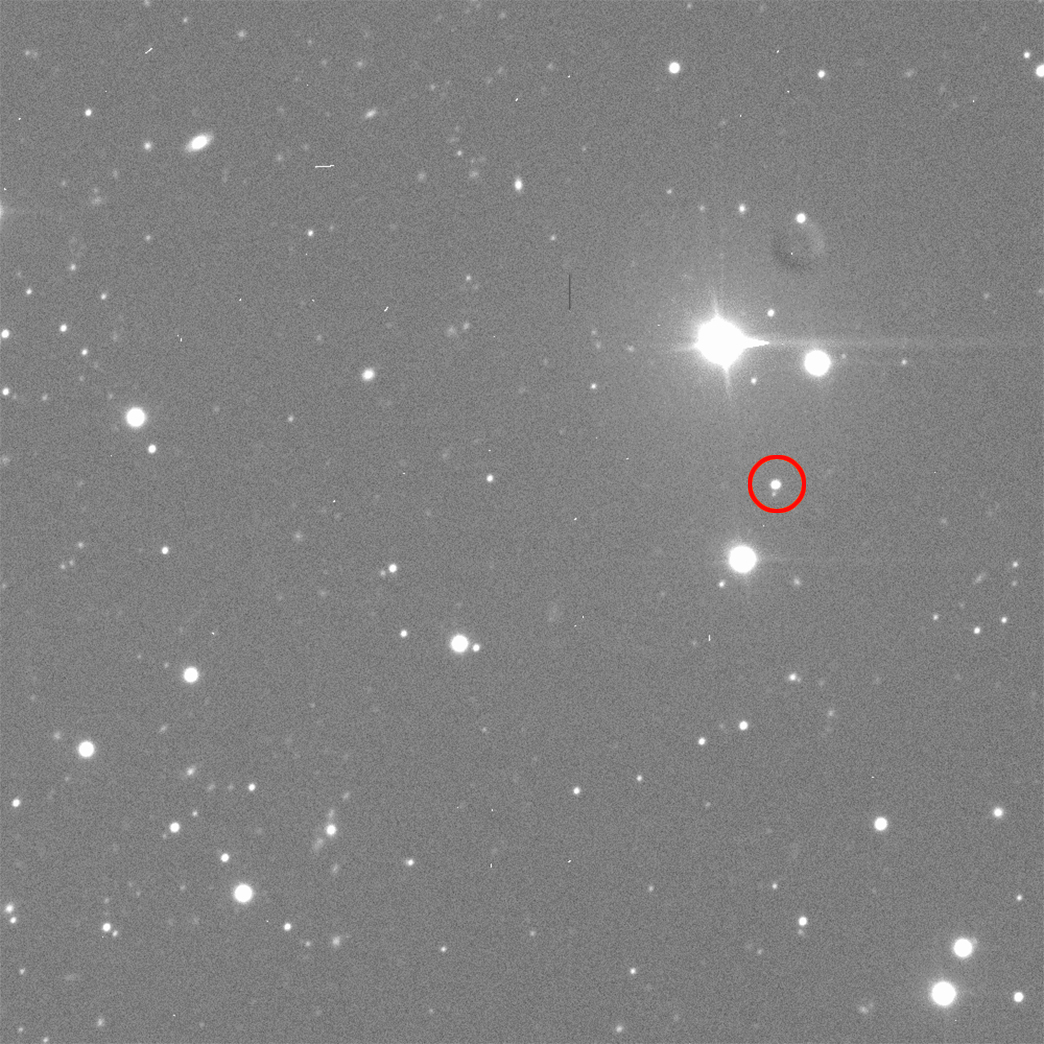
“The measurements the team made in early 2021 were critical for making sure that DART arrived at the right place and the right time for its kinetic impact into Dimorphos,” said Andy Rivkin, the DART investigation team co-lead at the Johns Hopkins University Applied Physics Laboratory (APL) in Laurel, Maryland. “Confirming those measurements with new observations shows us that we don’t need any course changes and we’re already right on target.”
However, understanding the dynamics of Dimorphos’ orbit is important for reasons beyond ensuring DART’s impact. If DART succeeds in altering Dimorphos’ path, the moonlet will move closer toward Didymos, shortening the time it takes to orbit it. Measuring that change is straightforward, but scientists need to confirm that nothing other than the impact is affecting the orbit. This includes subtle forces such as radiation recoil from the asteroid’s Sun-warmed surface, which can gently push on the asteroid and cause its orbit to change.
“The before-and-after nature of this experiment requires exquisite knowledge of the asteroid system before we do anything to it,” said Nick Moskovitz, an astronomer with Lowell Observatory in Flagstaff, Arizona, and co-lead of the July observation campaign. “We don’t want to, at the last minute, say, ‘Oh, here’s something we hadn’t thought about or phenomena we hadn’t considered.’ We want to be sure that any change we see is entirely due to what DART did.”
In late September to early October, around the time of DART’s impact, Didymos and Dimorphos will make their closest approach to Earth in recent years at approximately 6.7 million miles (10.8 million kilometers) away. Since March 2021 the Didymos system had been out of range of most ground-based telescopes because of its distance from Earth, but early this July the DART Investigation Team employed powerful telescopes in Arizona and Chile – the Lowell Discovery Telescope at Lowell Observatory, the Magellan Telescope at Las Campanas Observatory, and the Southern Astrophysical Research (SOAR) Telescope – to observe the asteroid system and look for changes in its brightness. These changes, called “mutual events,” occur when one of the asteroids passes in front of the other because of Dimorphos’ orbit, blocking some of the light they emit.
“It was a tricky time of year to get these observations,” said Moskovitz. In the Northern Hemisphere, the nights are short, and it is monsoon season in Arizona. In the Southern Hemisphere, the threat of winter storms loomed. In fact, just after the observation campaign, a snowstorm hit Chile, prompting evacuations from the mountain where SOAR is located. The telescope was then shut down for close to ten days. “We asked for six half-nights of observation with some expectation that about half of those would be lost to weather, but we only lost one night. We got really lucky.”
In all, the team was able to extract from the data the timing of 11 new mutual events. Studying those changes in brightness enabled scientists to determine precisely how long it takes Dimorphos to orbit the larger asteroid and thereby predict where Dimorphos will be located at specific moments in time, including when DART makes impact. The results were consistent with previous calculations.
“We really have high confidence now that the asteroid system is well understood and we are set up to understand what happens after impact,” Moskovitz said.
Not only did this observation campaign enable the team to confirm Dimorphos’ orbital period and expected location at time of impact, but it also allowed team members to refine the process they will use to determine whether DART successfully changed Dimorphos’s orbit post-impact, and by how much.
In October, the team will again use ground-based telescopes around the world to look for mutual events and calculate Dimorphos’ new orbit, expecting that the time it takes the smaller asteroid to orbit Didymos will have shifted by several minutes. These observations will also help constrain theories that scientists around the world have put forward about Dimorphos’ orbit dynamics and the rotation of both asteroids.
Johns Hopkins APL manages the DART mission for NASA’s Planetary Defense Coordination Office as a project of the agency’s Planetary Missions Program Office, which is at NASA’s Marshall Space Flight Center.
DART is the world’s first planetary defense test mission, intentionally executing a kinetic impact into Dimorphos to slightly change its motion in space. While neither asteroid poses a threat to Earth, the DART mission will demonstrate that a spacecraft can autonomously navigate to a kinetic impact on a relatively small target asteroid and that this is a viable technique to deflect an asteroid on a collision course with Earth if one is ever discovered. DART will reach its target on Sept. 26, 2022.
Webb’s Jupiter Images Highlighted on ‘This Week at NASA’
NASA’s James Webb Space Telescope recently captured new images of Jupiter that may give astronomers even more clues to the planet’s inner life. The Webb images are featured in “This Week @ NASA,” a weekly video program broadcast on NASA-TV and posted online.
The images, captured by Webb’s Near-Infrared Camera, or NIRCam, show auroras extending to high altitudes above the northern and southern poles of Jupiter. They also provide details about some of the planet’s clouds, haze, and other atmospheric features, such as the Great Red Spot, a storm so big it could swallow Earth. Researchers have already begun analyzing Webb data to get new science results about our solar system’s largest planet.
The Webb team at NASA’s Marshall Space Flight Center spent more than two decades working on Webb, primarily focusing on development and testing of the mirrors in extreme cold temperatures at which Webb operates.
View this and previous episodes at “This Week @NASA” on NASA’s YouTube page.

























